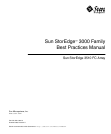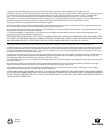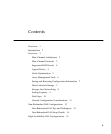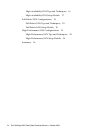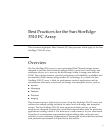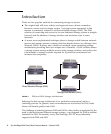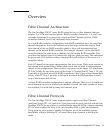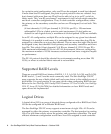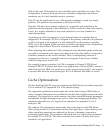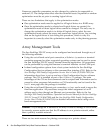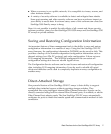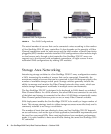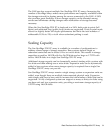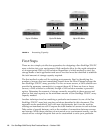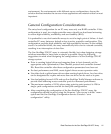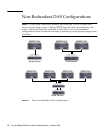
Best Practices for the Sun StorEdge 3510 FC Array 3
Overview
Fibre Channel Architecture
The Sun StorEdge 3510 FC array RAID controller has six fibre channels that can
support 1 or 2 Gb data transfer speeds. RAID controller channels 0, 1, 4, and 5 are
normally designated for connection to hosts or Fibre Channel switches. RAID
controller channels 2 and 3 are dedicated drive channels.
In a dual RAID controller configuration, both RAID controllers have the same host
channel designators, due to the architecture of the loops within the chassis. Each
host channel of the top RAID controller shares a loop with the matching host
channel on the bottom RAID controller. For example, channel 0 of the top RAID
controller shares the same loop as channel 0 of the bottom RAID controller. This
provides four distinct loops for connectivity with two ports per loop. The individual
loops provide LUN failover without causing HBA path failover in the event of a
controller failure.
Each I/O board has two ports designated as disk drive loops. These ports connect to
the internal dual-ported Fibre Channel disk drives and are used to add expansion
chassis to the configuration. The two drive loop ports on the upper I/O board form
FC loop 2 while the two drive ports on the lower I/O board form FC loop 3. FC loop
2 provides a data path from both RAID controllers to the A loop of the internal disk
drives, while FC loop 3 provides a data path from both RAID controllers to the B
loop of the internal disk drives.
A single RAID controller configuration is slightly different. The lower I/O board has
drive channels but does not have host channels. Overall, the same number of loops
are available, but with half as many host channel ports.
Fibre Channel Protocols
The Sun StorEdge 3510 FC array supports point-to-point and Fibre Channel–
Arbitrated Loops (FC–AL) protocols. Using the point-to-point protocol with the Sun
StorEdge 3510 FC array requires a switched fabric network (SAN), whereas selecting
FC-AL mode enables the array to be used in either DAS or SAN environments.
Using point-to-point protocol enables full-duplex use of the available channel
bandwidth, whereas selecting FC-AL mode limits host channels to half-duplex
mode.



